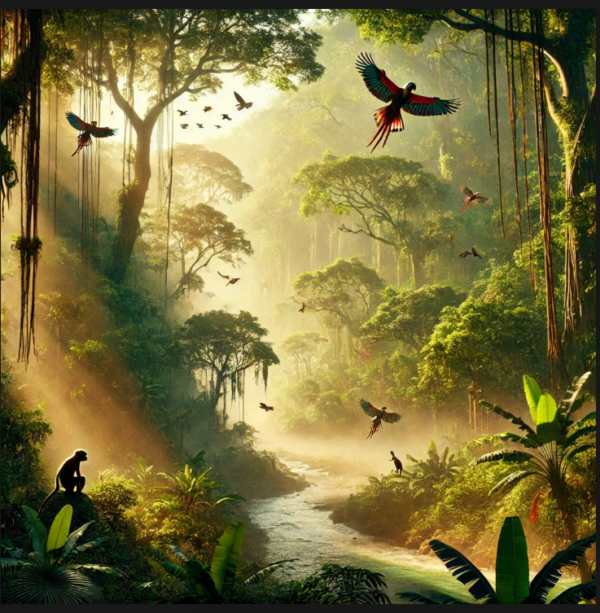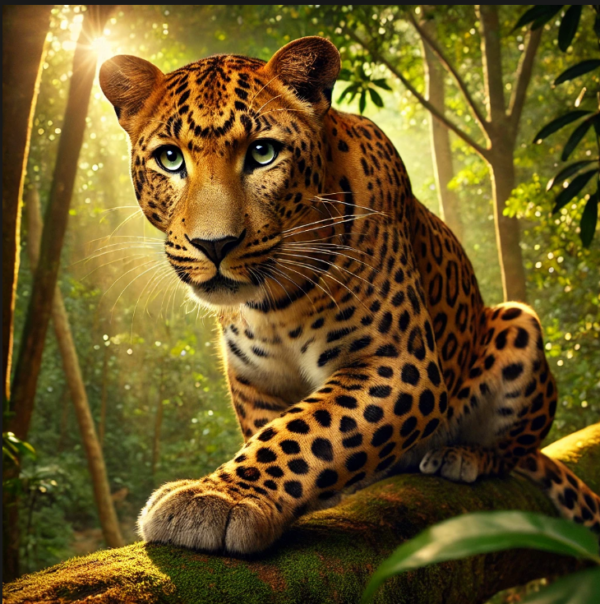The Mighty Hunter of Sri Lanka’s Jungles: The Elusive Leopard-by Kalani-eLanka

Sri Lanka’s dense forests and vast national parks are home to a variety of fascinating wildlife, but among them, the Sri Lankan leopard (Panthera pardus kotiya) reigns as the apex predator. This magnificent feline, endemic to the island, is a symbol of strength and stealth, earning its reputation as the mighty hunter of Sri Lanka’s jungles.
A Unique Subspecies
The Sri Lankan leopard is a distinct subspecies of the leopard family and is classified as endangered by the International Union for Conservation of Nature (IUCN). Unlike their counterparts in Africa and India, Sri Lankan leopards have adapted to thrive in the island’s diverse landscapes, from the arid scrublands of Yala to the misty highlands of Horton Plains.
A Master of Stealth and Strength
Leopards are solitary hunters, relying on their keen senses and muscular build to ambush prey. They primarily hunt deer, wild boar, monkeys, and smaller mammals, using their powerful jaws and retractable claws to take down animals larger than themselves. With the ability to climb trees effortlessly, they often drag their kills to elevated spots to avoid scavengers.
Prime Habitats in Sri Lanka
Some of the best locations to spot leopards in Sri Lanka include:
- Yala National Park – Known for having one of the highest leopard densities in the world.
- Wilpattu National Park – Famous for its dense forests and hidden waterholes where leopards often lurk.
- Horton Plains – Though rare, leopards have been sighted in this cool and misty landscape.
- Kumana and Gal Oya National Parks – Lesser-known but equally significant habitats for these majestic cats.

Conservation Challenges
Despite being the top predator in Sri Lanka, leopards face numerous threats. Habitat destruction due to deforestation and human encroachment has significantly reduced their roaming grounds. Additionally, conflicts with villagers, poaching, and illegal wildlife trade pose serious risks to their survival. Conservation initiatives, including protected national parks, anti-poaching measures, and community awareness programs, are essential for ensuring the survival of these magnificent hunters.
The Leopard’s Cultural Significance
The Sri Lankan leopard has deep roots in the country’s folklore and history. It has been depicted in ancient carvings and continues to be an integral part of the nation’s wildlife heritage. Safaris and eco-tourism initiatives focused on leopards have also contributed to conservation efforts while providing visitors with the thrill of spotting these elusive creatures in their natural habitat.
Conclusion
The Sri Lankan leopard stands as a proud and powerful symbol of the island’s rich biodiversity. Protecting these mighty hunters is crucial not only for maintaining ecological balance but also for preserving the natural wonders of Sri Lanka for future generations. By promoting responsible tourism and supporting conservation efforts, we can ensure that the Sri Lankan jungle continues to echo with the silent footsteps of its most formidable predator.






















